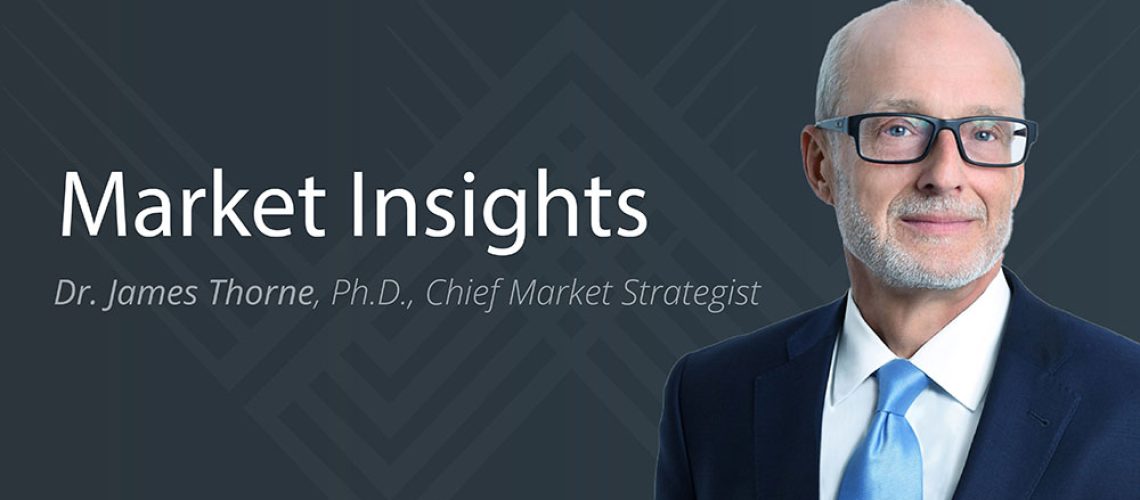Meme Stocks, Millennials and The Fourth Turning
Download this article as a PDF.
“We are the middle children of history…raised on television to believe that one day we’d all be millionaires, and movie gods, and rock stars. But we won’t. And we’re slowly learning that fact. And we’re very, very pissed off.” — Fight Club, 1999.
The 1999 film Fight Club follows Tyler Durden (Brad Pitt), a rule breaking, disillusioned salesman who easily personifies the millennial generation. While the classics we may remember, such as The Great Gatsby or Death of a Salesman, suggested that the American Dream was broken, Fight Club represents a generation dealing with the gaping hole left in the absence of the American Dream – a dream that was never reachable in the first place. It foreshadows today’s growing millennial dissent – a generation now entering its prime family formation, earning, and investing years.
Today, we are beginning to see the impact of the actions of this angry group: millennials can and will influence the markets. Consider the more recent emergence of the volatile “meme stocks,”[1] a by-product of this generation. We suggest that this is just the beginning: millennials are marching down a path to change existing social norms, institutions, and investment styles – and investors should be prepared for a wild ride.
A New Generational Angst
Today, the millennial generation is characterized as one that largely feels there is no hope, that the decisions of previous generations have been flawed and that extreme measures are needed to resolve the consequences of their actions. Born between 1981 and 1996, millennials have been largely raised in a protected environment. Yet, at the same time, they have been exposed to traumatic events that have made them distrust the system, including the Oklahoma bombing, the Columbine massacre, the World Trade Center attack, wars in Afghanistan and Iraq, the O.J. Simpson trial and Clinton impeachment, to name a handful. Millennials have been conditioned to live in the moment. They are the first digital natives, and constant exposure to social media has bred a culture of continuous questioning of the truth. They have grown up to become disillusioned with the institutions and social norms that previous generations accepted. Many are old enough to remember the impact of the 2008 global financial crisis and the policy response that bailed out Wall Street and left Main Street to deal with severe austerity – a perceived injustice still fresh in their memories.
This generational angst is part of a natural evolutionary process. Historians William Strauss and Neil Howe postulated that there are four basic generational types that help to predict a recurring generational cycle in society’s evolution.[2] Each generational type, called a “turning,” lasts around 20 to 25 years and is characterized by new social, political and economic moods. They show that history follows a predictable sequence: every two generations, at the second and fourth turnings, there is a crisis relating to either an upheaval of values or one of a more severe, secular nature. According to Strauss and Howe, we are in the fourth turning, living through a period of upheaval, in which the old civic order is being replaced by a new one. This upheaval is tied to generational aging and should be expected. In today’s turning, the agreements and institutions that have existed since the end of WWII are now being challenged and replaced.
The Angst: Manifesting Itself in the Markets
The civil and social unrest we have more recently witnessed is a consequence of this generational shift. Even the financial markets have not been immune. As the number of millennial investors has grown with the introduction of low-cost and no-cost trading platforms, this generation has been responsible for introducing a new trading phenomenon known as the meme stocks: select stocks that experience dramatic price increases and ensuing market volatility, despite the stocks rarely having fundamentals that justify these changes in value. This has mostly been fuelled through the collective work of influencers on social media and can be interpreted through the lens of Strauss and Howe’s theory as a push back against traditional Wall Street social norms.
What is driving this behaviour? Today the younger generation feels as though the American Dream is dead and that there is no way they will be able to attain the wealth positions of previous generations. Millennials have higher levels of debt than any other generation has had at their age.

They are also well behind in wealth accumulation. Adding to the frustration, they face other challenges. With housing prices at record levels in many markets, the conventional view of home ownership as a normal life milestone has now become a pipe dream.

In 1979, Daniel Kahneman and Amos Tversky developed “prospect theory”[3] to explain why we make decisions, based on the idea that we value losses and gains differently. As part of their observations, they determined that risk taking often increases when a decision maker feels they are substantially behind a benchmark. Prospect theory may provide investors with clarity on what we are experiencing in today’s markets, as share prices continue to grow and we see a departure from traditional fundamental valuations. As the millennials now view their wealth position being well behind previous generations, they assume greater risk. As such, we should not be surprised at the events witnessed over the past year: the rise of the Robinhood investor, the trampolining meme stocks, the growth of cryptocurrencies to become an asset class and a record number of new brokerage accounts being opened.
Will this last forever? No – but, this is prospect theory playing out in real life.
The Natural Evolution Continues
While the millennial generation may feel challenged by these hardships, we can confidently assert that they are not insurmountable. In fact, this is just part of a natural evolutionary cycle. Too few remember the Oval Office speech by President Jimmy Carter in the late 1970s when he stated: “for the first time in the history of our country, a majority of our people believe that the next five years will be worse than the past five years.”[4] When the torch is passed from one generation to the next, there is often a belief that the best days are behind us.
This is a common narrative used by politicians and it may also be the secret to why the U.S. economy has been able to continually evolve. When a generation loses hope and blames previous ones, academia refers to this as a “jeremiad”, which accounts for the misfortunes of an era and may prophesize society’s imminent downfall. Jeremiads often compare the best parts of a former generation with the worst parts of their own, with neither the past nor the present getting fair treatment. Yet, this acts as the impetus for generational change.
We mustn’t forget that every generation has walked the proverbial “uphill both ways.” Consider the baby boomers: the economic indicators confronting boomers before the bull market of the 1980s and 1990s were far from auspicious; in fact, they were downright bleak. For instance, between January 30, 1976, and March 3, 1978, the S&P 500 Index lost a cumulative 11.85%. In 1979, skyrocketing oil prices resulted in a global energy crisis and gas station lines nationwide that stretched for blocks. In 1980, the inflation rate hit a whopping 13.5%! And we mustn’t forget that in 1982 the interest rate on a 30-year mortgage was 15.5%, largely stalling the housing market. If that wasn’t bad enough, the boomers experienced another financial trauma when the stock market plummeted in 1987 on Black Monday. On October 2, 1987, the S&P 500 Index traded around 328 points after rising for most of the year. Within two months, it had plunged by 32%. Unlike the rapid rebounds seen today, the index wouldn’t recover to previous highs until June 1989. Yet, the index rallied in the 1990s to an annualized gain of 18.2%[5], thanks largely to boomers who had a higher risk tolerance than their parents and bought at market lows.
To be clear, history suggests that stock market cycles typically end when the generation dominating social preferences, economic growth and investing peaks. This happened with the baby boomers, as well as the silent generation that preceded them, and we expect this to happen with the millennials.

Don’t Fight the Fight Club
Why shouldn’t we look away? One reason: their sheer size. Part of the reason baby boomers have been cited for their generational influence is that they outnumbered previous generations, at around 81.3 million according to the most recent U.S. Census.[6] However, millennials constitute an even larger population at 85.2 million strong.[7] As they form families, enjoy prime earning years and invest their wealth,[8] they will continue to acquire greater financial means and maturity over the coming years. They will now be the dominant force in generating demand for goods and services that benefit the economy, as well as the wealth that supports the financial markets. History should remind us that it wasn’t until the boomers had reached their early to mid-30s that they truly began to make their presence felt in the stock market.

Millennials are also better educated than previous generations.[9] Wall Street has also educated them well: they’ve been told that few active managers can beat the index, and instead to buy ETFs…and they do. They know more about options trading, exploiting the opportunity to buy out-of-the-money calls to force a gamma squeeze – the mechanics behind the meme stock movement. They are the first generation to grow up with the internet. As digital natives, they understand Metcalfe’s Law and the power of exponential growth through the network effect. They have seen a $10,000 investment in the Amazon IPO of 1997 grow to more than $20 million today. And, many have grown fearless to the evolutionary process of the tech titans – they are aware that this same Amazon stock has declined by more than 50% on numerous occasions.
As investors, they are passionate about integrating their interests and values in investing. In fact, while many investors have expressed interest in ESG (environmental, social and governance) investing, 90% of millennial investors want to tailor their investments to their values and many have a strong interest in tracking the impact return on their investments.[10] This all culminates in a desire to invest thematically and recognize that a buy-and-hold strategy may not be optimal, especially when investing in highly volatile assets.
Their use of the internet and social media to inform, educate and collaborate cannot be underestimated. As the meme stock movement has shown, this same network effect is starting to manifest itself in the ability for younger investors to identify market inefficiencies. Social media sites with millions of followers inform other investors about these investment ideas, and in real time – a seemingly unconventional approach that was never in reach for older generations. This has created new markets and investing dynamics: this is no longer their grandfather’s stock market!

Where to for Investors?
For now, we are experiencing a period of extreme change as disillusioned millennials take on risk so their voices can be heard. As we suggested in our 2020 and 2021 market forecasts, the rise of the millennials should follow the path of previous generations. A higher willingness to take risks should, as in the past, manifest itself in higher market P/E multiples, which we are witnessing today and this could potentially last for some time. This may not suit traditional fundamental financial analysis, but this phase will eventually end and fundamentals will once again matter.
We suggest that as millennials accumulate more wealth, and as social, political and economic institutions start to reflect their core values, the extreme risk taking will decline, as predicted by prospect theory. We should also expect that as wealth is eventually transferred from the boomers to the millennials – with over $68 trillion[1] expected to change hands within the next two decades –their risk taking will also be tempered. Millennials are set to become the richest generation ever.
To wit, we are in the early stages of a secular bull market that could last until the end of the decade, potentially extending into mid-2030.[2] If history is any guide, we witnessed an extended bull market run that benefitted investors and generated economic growth when the baby boomers were reaching their peak from 1982 to 2000. The millennial generation will not peak until at least 2030. Given that millennials will chart the course for the investing landscape going forward, those investors who embrace their differing point of view – likely to manifest itself in evolving investment opportunities – could be handsomely rewarded. For now, investors should ignore the noise of the meme stocks and stick to their financial plans, but acknowledge that the loathing, fear and resentment felt by the millennial generation is part of an evolutionary process that is well underway.
In the words of Tyler Durden: “Remember this. The people you’re trying to step on, we’re everyone you depend on.” A generation larger than the baby boomers, and one set to become the richest, is beginning to change social norms, institutions, and investment styles – and investors should take note.
References
[1] Meme stocks are shares of companies that have seen a recent surge in viral activity fueled by social media platforms.
[2] https://www.fourthturning.com/
[3] Econometrica, Volume 47, March 1979.
[4] https://www.jimmycarterlibrary.gov/research/selected_speeches/
[5] Robert Shiller online data set Yale University.
[6] https://www.census.gov/
[7] https://www.pewresearch.org/social-trends/2014/03/07/millennials-in-adulthood/
[8] Frey, W. The Millennial Generation, Brookings Institute, Jan. 2018.
[9] https://www.goldmansachs.com/insights/archive/millennials/
[10] Sustainable Signals (White Paper). Morgan Stanley Institute for Sustainable Investing, 2019.
[11] https://www.cnbc.com/2019/10/21/what-the-68-trillion-great-wealth-transfer-means-for-advisors.html
[12] According to Census projections, millennials in the prime investing and family formation cohort (30-50 years) are set to peak after 2030. https://www.census.gov/data/datasets/2017/demo/popproj/2017-popproj.html





